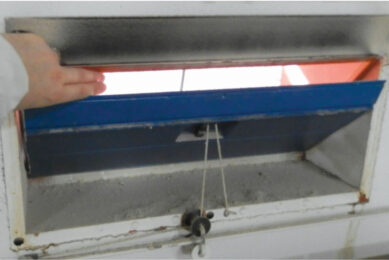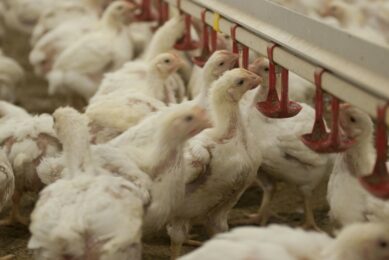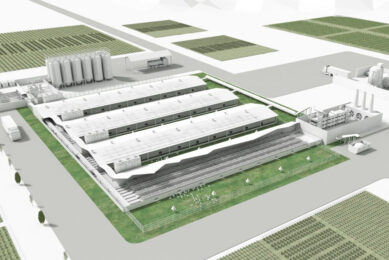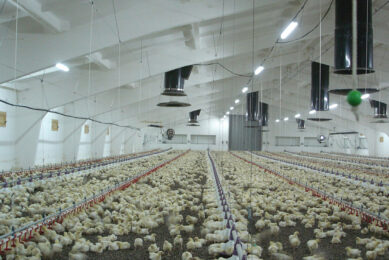Can your ventilation handle the hottest temperatures?
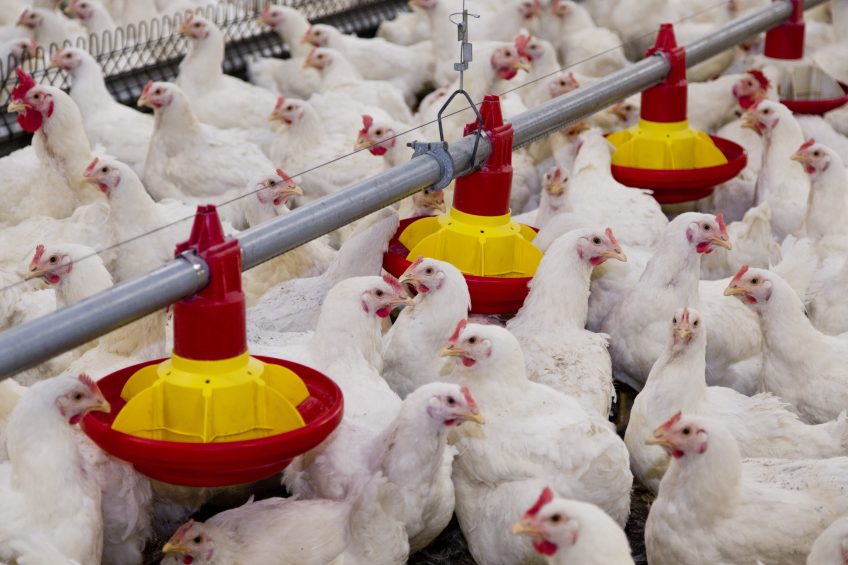
With one of the warmest Mays on record, Draper Ventilation is seeking to update the Defra heat stress in poultry booklet that is now more than 12 years old. We visited their Wimborne headquarters to find out more.
Fifteen years ago, the UK encountered one of its hottest periods in recent history. Temperatures at the end of July and early August 2003 soared to a record 38.5°C near Faversham, Kent. The temperature exceeded 32°C on three consecutive days between 4-6 August and then for five days between 8-12 August.
Heat wave
Draper Ventilation managing director Paul Draper believes a lot of new farmers coming into the broiler business don’t appreciate or remember the scale of the losses incurred by some producers in 2003 and more recent heat waves, due to inadequate ventilation. Some are looking to save costs. “People think they are up to specification to deal with extreme heat, while others say it won’t happen to us: for one of our customers hot weather happened on his first crop. Too many ventilation systems are going in at too low a spec; some less than we installed in 2003 and there is no legislation in this area.”
Following the 2003 heat wave, Defra – with support from the industry – produced a heat stress in poultry booklet that came out in 2005, but has not been updated since.
Draper Ventilation senior ventilation consultant Justin Emery helped produce the original while working for ADAS and has been seeking to update the booklet. The original booklet looked at high air speeds, urging producers to ensure that air passing over birds from inlets is as near to outside temperature and humidity as possible. It recommends removing the boundary layer of hot air around the birds, aiding convectional heat loss. This is particularly important when birds are at, or near, peak stocking rates. The booklet also suggests this removes humid air from around the birds’ heads making panting (evaporative heat loss) more efficient. Air speed also imparts a sense of windchill to the birds, making them feel cooler than the actual temperature. The booklet’s current advice is that all meat producers should aim for between 1m/s (200ft/minute) and 3m/s for relief against extreme heat. It says that 1m/s should be an absolute minimum for commercially stocked houses and that 1.0-1.5m/s should be within the abilities of most conventional powered ventilation systems.
“I wrote the original but I’ve updated a number of things. One thing I’ve done is suggested an increase in the minimum floor air speed which was 1m/s. I want to up that to 1.5m/s,” said Mr Emery. “This is possible with correct inlet design – tests show that lack of deflection of air to the floor interrupts the air flow over the floor, the correct inlet pressure and air speed – at house widths greater than 18m, air speeds need to be greater than 6m/s at the inlets; and there must be sufficient air change rate.
“Birds are much faster growing than in 2003 and can produce around 10-12W per bird. Air change rates need to be around 6m cubed/hr/kg, for now and for birds of the future with higher genetic potential.” Mr Emery said that, after 2003, tunnel ventilation was seen as the way forward to best cope with temperatures above 30°C but one of the most recent issues has been the Environment Agency’s move away from these type of ventilated sheds as they attempt to better disperse ammonia emission to protect plant life and biodiversity.
“They prefer high spread roof extraction ventilation, which means different inlet design and floor speeds to combat heat stress. It’s an ever-evolving picture but it’s part of their drive to get emissions as low as possible from poultry farms.”
Latest Environment Agency (EA) statistics show that fan ventilated, fully-littered floor with non-leaking drinkers emits 0.034kg/NH3/bird place/year. Mr Emery said that if the EA drive the design in a certain direction – such as high velocity roof extraction – they can never assume that everything can be scrubbed and therefore can move to zero emissions. Mr Emery is also concerned that some ventilation manufacturers have for many years rated their UK specification as being in climate zone one for temperatures, which doesn’t take into account extreme heat waves.
“However good the equipment, where ventilation rates are much lower than the traditional UK ADAS rates, I have personal experience or knowledge of farms where birds have died.
“This is because there was insufficient air change and air speed to keep birds alive even at temperatures of 28/29°C especially if farmers have expected to be able to stock, for example, 40,000 birds in houses when the system could only cope with 30,000.
Losses
“So the question is, do we as an industry accept that we will lose birds with people knowingly under-speccing ventilation systems when there is science and experience to show what is required, or do we as an industry provide for the welfare of birds correctly? For many, ventilation rates have remained unchanged since 2003/2004, despite the change in the birds.
Mr Draper accepts ventilation systems are expensive and that prices around ventilation capacity are seen to be dear, but legal action against the manufacturer can be very difficult when things go awry: It is the stock keeper that is responsible.




